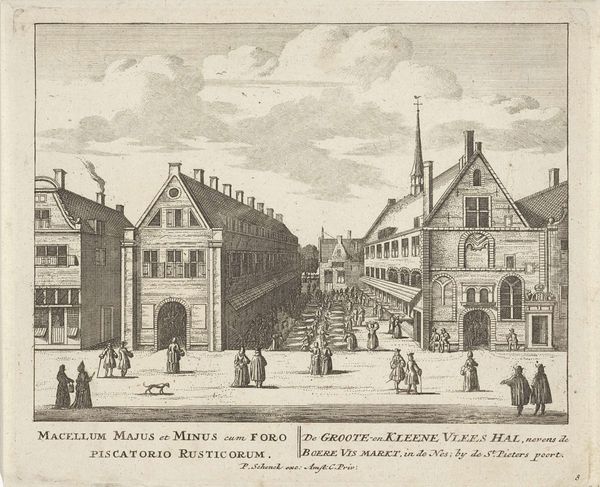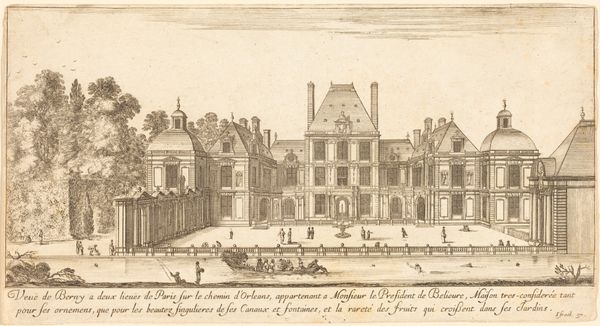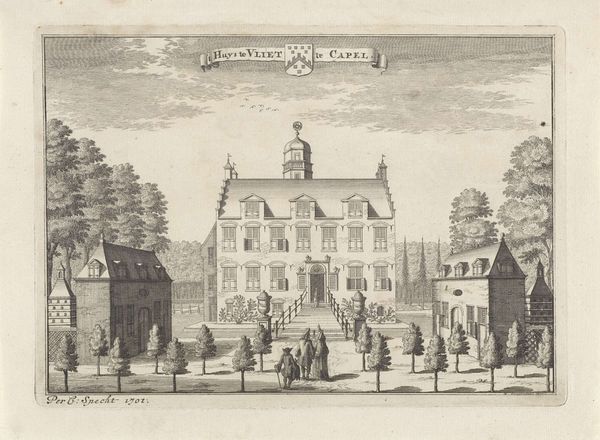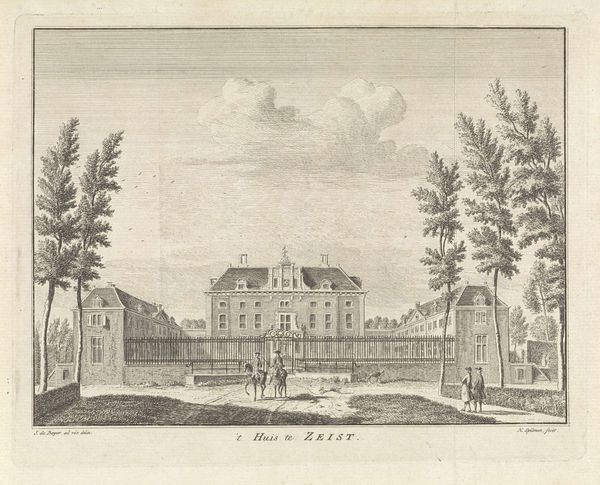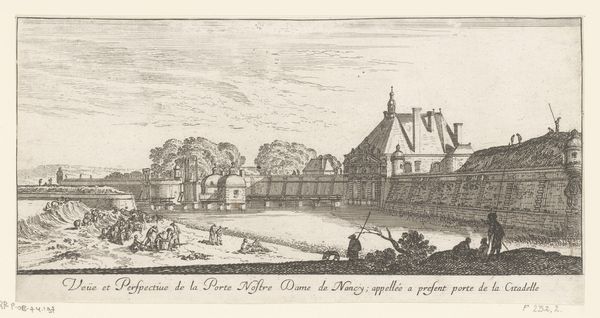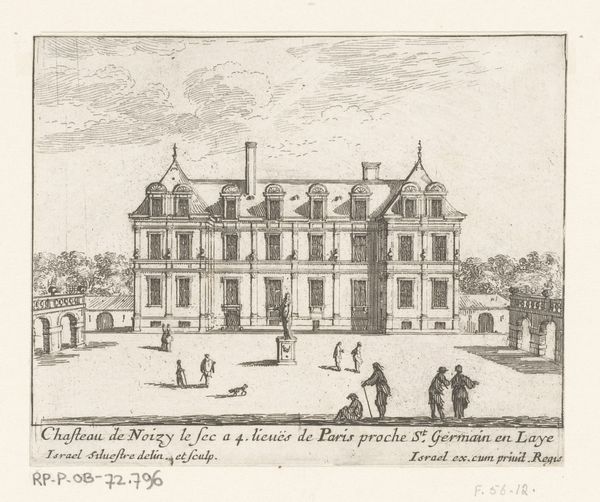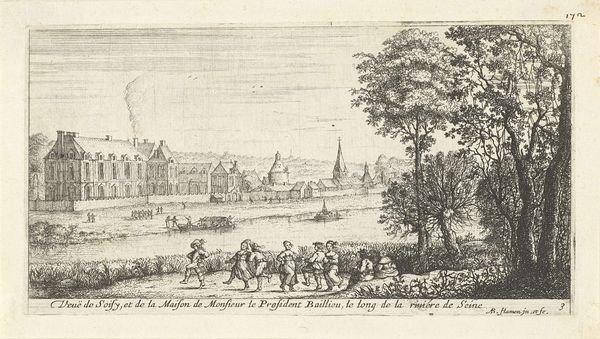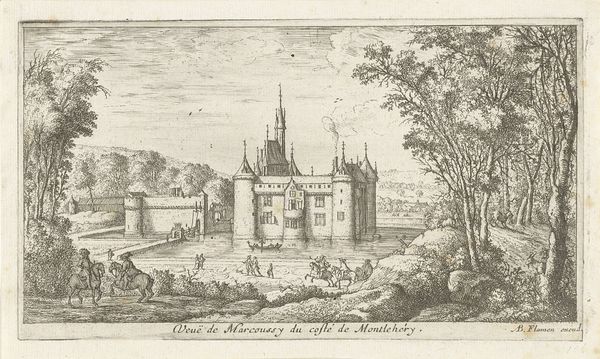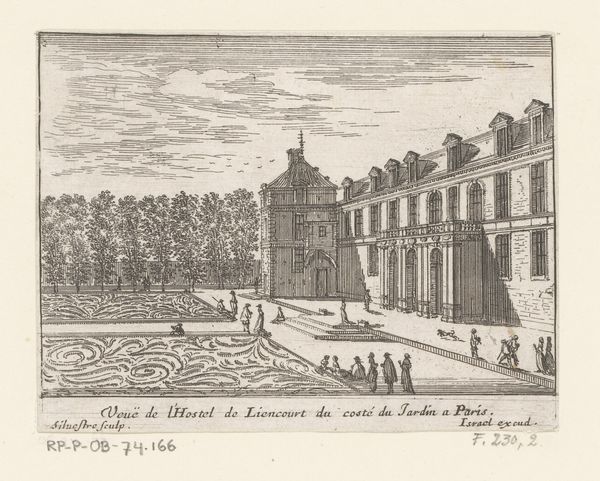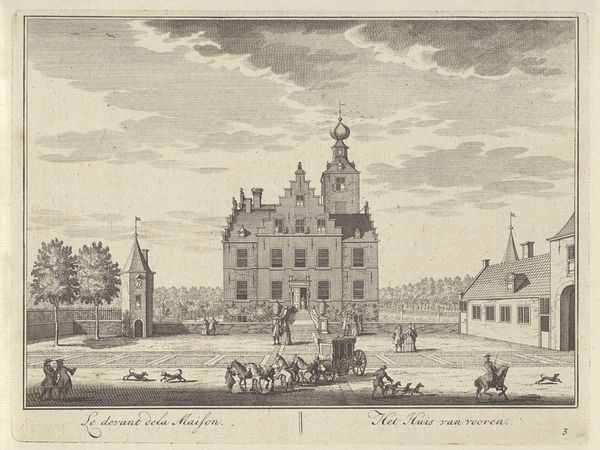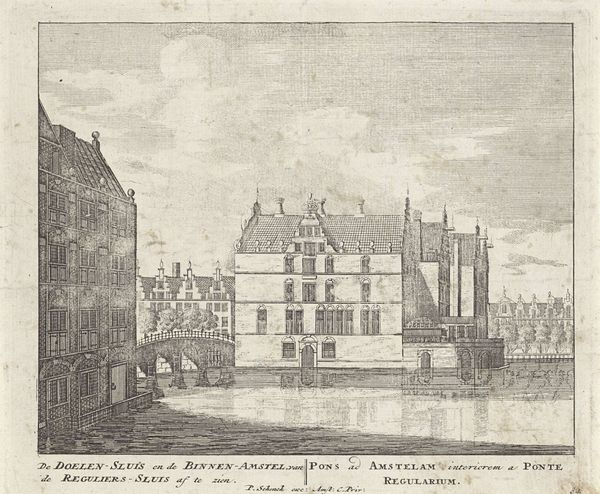
engraving, architecture
#
baroque
#
landscape
#
engraving
#
architecture
Dimensions: height 167 mm, width 204 mm
Copyright: Rijks Museum: Open Domain
Curator: This is "Binnenplaats van Kasteel Rosendael met gezelschap," an engraving made sometime between 1675 and 1711. It depicts the courtyard of Rosendael Castle. What are your initial impressions? Editor: It has a very formal, almost theatrical feel to it. Everyone is so posed, and the architecture is quite imposing. It’s interesting how the social hierarchy seems embedded in the composition itself. What do you see in this piece beyond the initial aesthetic? Curator: The "formal feel," as you astutely noted, speaks volumes. Consider the engraving within its historical context. This isn't merely a depiction of a pretty building; it's a visual assertion of power and privilege during a period of significant social stratification. Editor: How so? Curator: The architecture, rendered with such detail, showcases wealth and status, doesn't it? The figures in the courtyard are arranged to emphasize the landowners as central to the domain. It invites us to consider this image as a form of early propaganda. Who are the intended viewers? How does it reinforce the societal roles of both those within and outside the castle walls? Editor: So, the act of creating and distributing an image like this was itself a political act? It’s fascinating to think about how even seemingly innocuous scenes contributed to solidifying the social order. It is quite provocative when you think of it like that. I never imagined such an agenda in the architecture here. Curator: Exactly. It challenges the romantic notions of idyllic country estates. Reflect on how the artistic choices—perspective, composition, and the rendering of the figures—contribute to a larger narrative about power, class, and social control. What has stood out for you the most? Editor: That this beautiful engraving, which I first saw as just an interesting architectural study, also has something to say about inequality, privilege and the prevailing ideology of its time. Thanks! Curator: It's precisely in these layered readings that art history becomes powerfully relevant. Understanding the artistic past will hopefully inspire us to imagine a more socially just future.
Comments
No comments
Be the first to comment and join the conversation on the ultimate creative platform.
